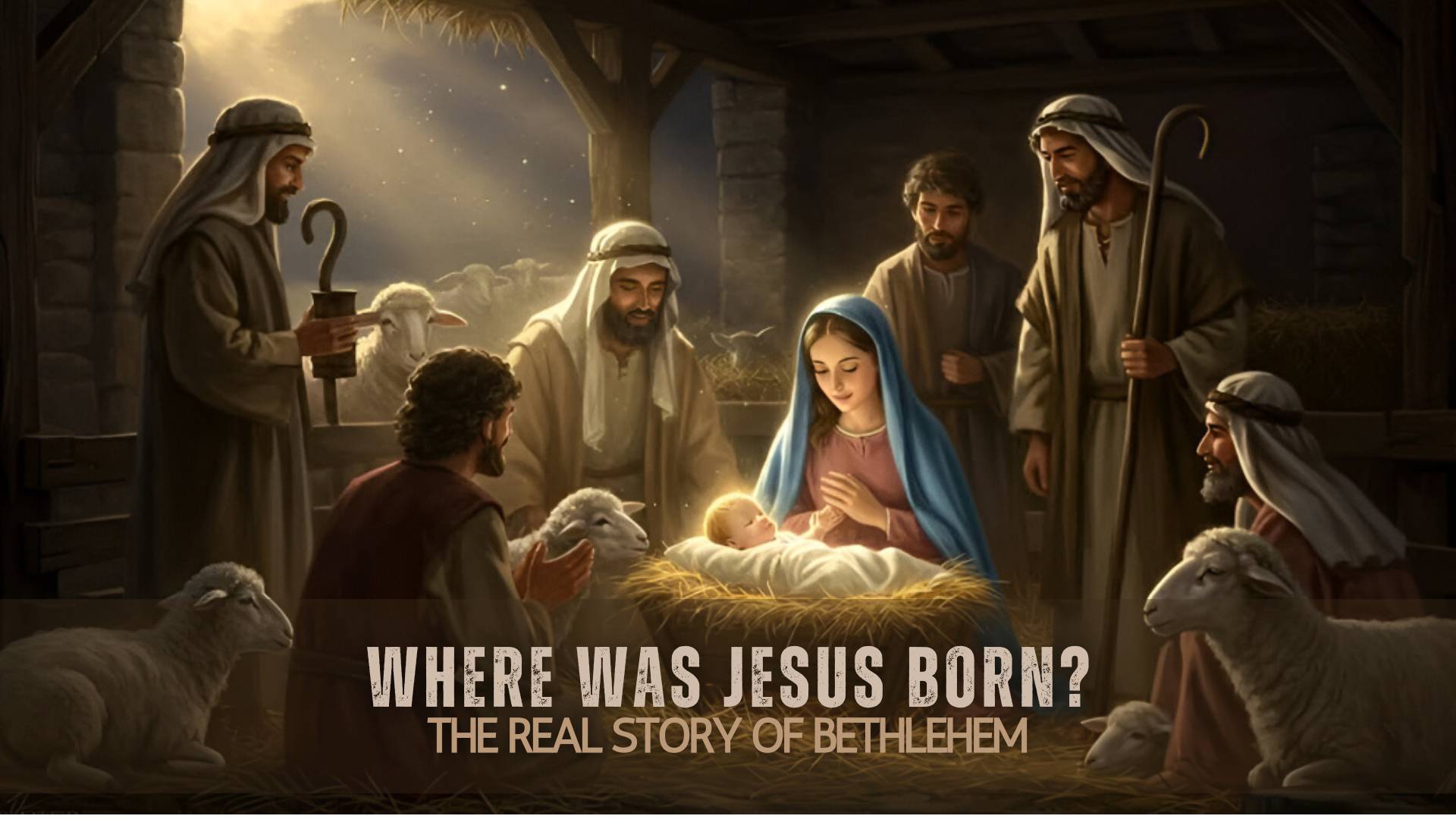
Where Was Jesus Born? The Real Story of Bethlehem — ActsSocial

By ActsSocial | actssocial.com
Every Christmas, Christians around the world celebrate the miraculous birth of Jesus. Nativity scenes, carols, and candlelight services remind us of that night long ago — but few stop to ask, “Where exactly was Jesus born?”
The Bible tells us He was born in Bethlehem, a small town just a few miles from Jerusalem. Yet, that simple answer opens a doorway to deep meaning — one that connects prophecy, history, and God’s amazing plan of salvation.
Let’s take a closer look at what Scripture, history, and faith reveal about the birthplace of Jesus.
1. The Biblical Account: Bethlehem of Judea
The most familiar record of Jesus’ birth comes from Luke 2:4–7 (ESV):
“And Joseph also went up from Galilee, from the town of Nazareth, to Judea, to the city of David, which is called Bethlehem... And while they were there, the time came for her to give birth. And she gave birth to her firstborn son and wrapped him in swaddling cloths and laid him in a manger, because there was no place for them in the inn.”
From this passage, we learn three clear facts:
Jesus was born in Bethlehem of Judea, the city of David.
He was laid in a manger, a feeding trough for animals.
There was no room in the inn — or, more accurately, no space in the guest room.
But what was this “manger”? And was Jesus born in a barn, a cave, or a house?
2. Was Jesus Born in a Barn, Cave, or House?
The Popular Image: A Barn
Most nativity scenes show a stable with wooden beams and animals nearby. This image comes from centuries of Western art — not necessarily from the Bible.
In ancient Israel, people didn’t build separate barns. Instead, animals were often kept inside the lower level of a family home for warmth and protection.
So, while it’s a beloved image, the idea that Jesus was born in a wooden barn is historically unlikely.
The Ancient Tradition: A Cave
Early Christian writers like Justin Martyr (around 150 AD) and Origen (around 250 AD) recorded that Jesus was born in a cave near Bethlehem.
When Emperor Constantine became a Christian, his mother, Helena, built a church over that very spot — the Church of the Nativity, which still stands today.
Archaeological evidence supports that many Bethlehem homes were built around caves, which were used as storage rooms or shelters for animals.
This makes the “cave” theory quite plausible — and it ties directly to early Christian pilgrimage traditions.
The Cultural Context: A House
Recent biblical scholarship offers another strong explanation.
In Luke 2:7, the word translated “inn” is the Greek kataluma — which actually means guest room, not public hotel.
That means Joseph and Mary were likely staying with relatives, but the upper guest room was already full due to the census.
So, Mary gave birth in the lower level of the home, where animals were kept and where a manger (feeding trough) would naturally be found.
This fits both the culture of Jewish hospitality and the humility of Christ’s birth — not rejected by strangers, but born among family in humble conditions.
3. The Church of the Nativity: The Historic Site
The Church of the Nativity in Bethlehem, built in the 4th century and rebuilt in the 6th, marks the traditional site of Jesus’ birth.
It sits above a small cave known as the Grotto of the Nativity, where a silver star marks the spot long venerated as the Savior’s birthplace.
This church and its surrounding pilgrimage route are recognized by UNESCO as a World Heritage Site, emphasizing its 1,700-year-long tradition as one of Christianity’s holiest places.
Whether Jesus was born in a cave or a lower-level room, the location points to Bethlehem, fulfilling prophecy and faith alike.
4. Bethlehem: The City of Prophecy
Hundreds of years before Jesus’ birth, the prophet Micah wrote:
“But you, Bethlehem Ephrathah, though you are small among the clans of Judah,
out of you will come for me one who will be ruler over Israel,
whose origins are from of old, from ancient times.”
— Micah 5:2
Bethlehem’s name means “House of Bread.”
It was also the hometown of King David, Israel’s shepherd-king.
So it’s no accident that Jesus — the Bread of Life (John 6:35) and the Son of David — was born there.
Through Bethlehem, God connected prophecy, lineage, and purpose in one powerful moment.
5. What Happened After the Birth
Not long after Jesus’ birth, shepherds visited the newborn Savior after hearing the angel’s announcement:
“For unto you is born this day in the city of David a Savior, who is Christ the Lord.” — Luke 2:11
Sometime later, wise men from the East followed a star to Bethlehem, offering gold, frankincense, and myrrh.
When King Herod heard of the birth of a “new king,” he ordered a massacre of infants, forcing Joseph and Mary to flee to Egypt (Matthew 2:13–16).
Eventually, they returned and settled in Nazareth, which is why Jesus later became known as “Jesus of Nazareth.”
6. Why Jesus’ Birthplace Still Matters
Bethlehem reminds us that God’s greatest work began in humility.
He didn’t choose Rome’s palaces or Jerusalem’s temple — He chose a quiet village and a simple manger.
For believers, Bethlehem stands for:
God’s faithfulness — fulfilling His promises in precise detail.
God’s humility — the King of Kings entering the world as a helpless baby.
God’s nearness — choosing to dwell among ordinary people.
No matter where you are, the story of Bethlehem tells us that God meets us in lowly places and brings hope to humble hearts.
7. The Message of Bethlehem for Today
In today’s busy, image-driven world, Bethlehem whispers a timeless truth:
You don’t need status or strength to be part of God’s plan.
Like Mary and Joseph, all God asks for is faith, obedience, and an open heart.
When we make room for Jesus — even if it’s just a humble space — He fills it with His presence and peace.
“Glory to God in the highest, and on earth peace among those with whom He is pleased.” — Luke 2:14
Quick Summary
Question: Where was Jesus born?
Answer: Jesus was born in Bethlehem of Judea, likely in the lower level of a family home where animals were kept, and laid in a manger.
Early Christian tradition associates His birthplace with a cave, now beneath the Church of the Nativity in Bethlehem.
FAQ Section (add as schema)
Q: Why was Jesus born in Bethlehem?
A: To fulfill prophecy (Micah 5:2) that the Messiah would come from the city of David’s lineage.
Q: Was Jesus born in a stable or a house?
A: Most likely a family home’s lower room, not a separate barn or inn.
Q: Can you visit the birthplace of Jesus today?
A: Yes. The Church of the Nativity in Bethlehem marks the traditional site and is open to pilgrims year-round.












